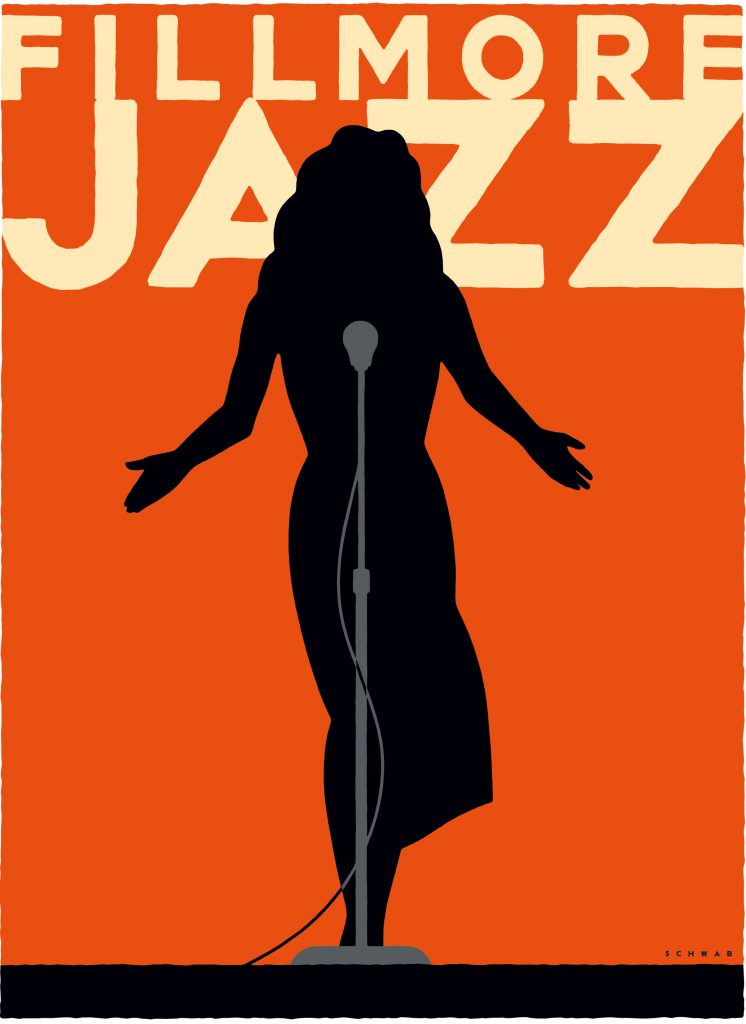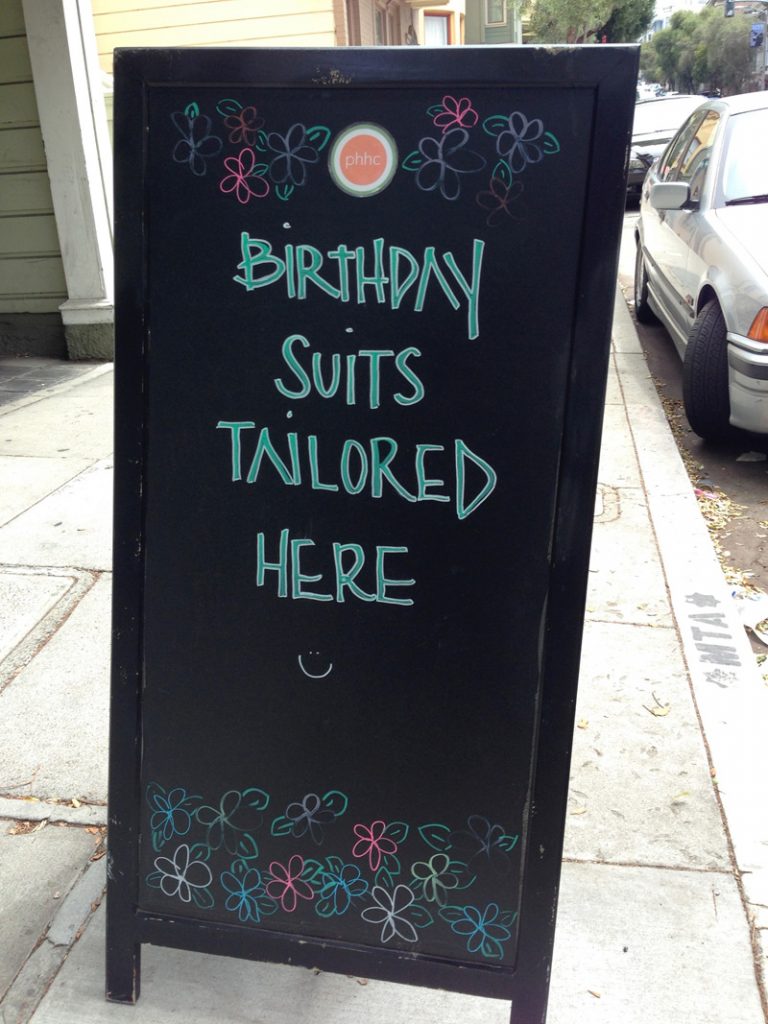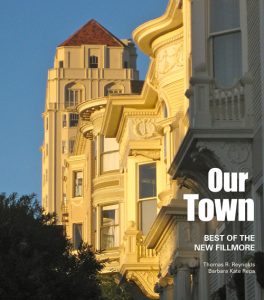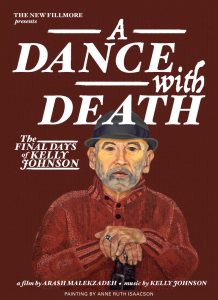PACIFIC HEIGHTS HEALTH CLUB has always been a harbinger of the times. The club, at 2356 Pine Street, just off Fillmore, opened in 1984 to men only. The entranceway was plastered with a 12-foot tickertape — a nod to owner Ken Lapan, who was also an attorney and stockbroker. Members were given free half-hour massages — and attendants opened the lockers and handed out towels. There were only six health clubs in all of San Francisco then.
In 1990, David Kirk, a former fitness trainer and sales manager at the club, bought the place, refashioning the front to include an all-women facility. It wasn’t until 2002 that the exercise spaces were combined and members of all genders were allowed to sweat and roam freely.
In the late ’80s, John Kennedy Jr. set many local hearts atwitter when he worked out in the club while he was staying in the neighborhood. It was around the same time he was named People magazine’s “Sexiest Man Alive.” (He also reportedly benchpressed 225.)
In 2004, Kirk sold the club to Amy Lang, a refugee from the corporate world. The place retained its quirkiness, including a weight room with a retractable ceiling for al fresco fitness. Under Lang’s stewardship, locals soon regarded it as a place they could slip in to work out without designer workout wear or already-bulging biceps.
This month, Lang announced still another metamorphosis of the club. She’s doing away with yoga and Zumba classes and focusing on small group training and Pilates — a combo she hopes will attract the burgeoning crowd of residents in the “50 and older” range.
Pilates equipment has already been moved into what was the sparse and spacious room upstairs that was used for yoga and Zumba classes, and new class times and workshops herald the taste of things to come.
She recently discussed the changes.
So yours is not the story we have come to expect, with the landlord putting the squeeze on a small neighborhood business?
Our old lease was up on May 31. We’ve renegotiated through June and are still working out terms for the future. But it’s not fair to make the landlord the bad guy. A landlord will ask for what the market will bear. As a business owner, it’s up to me to figure out the business.
What prompted the changes you’re making?
The lease renewal and looming rent increase really made me take a hard look at the business. I think we all have a tendency to want to hang on to the charm of the past. But after 12 years, I wasn’t sure I wanted to renew the lease. I did a lot of soul searching, trying to figure out why I became a small business owner to begin with. The responsibility of taking care of staff and club members can weigh heavily sometimes. I also had to take a hard look at the numbers, and ask myself if there was a better way to use the space we have.
What did all of that introspection reveal?
I realized we were trying to do a little of everything at the club, and it hadn’t really been working. But failure is the opportunity to begin again — and this time I want to do things more intelligently. While working at building a health club, I lost my focus a little. I forgot what my goal was when I originally took over the place.
I was working at Yahoo, my last corporate job, and I remember reading that the rate of obesity had quadrupled — and also about the rising rate of health care for Baby Boomers. I was really taken by that. I had also gained about 15 pounds. That’s when I finally decided to ask a personal trainer for help, and I saw a new world. I lost weight, and I got stronger and fitter. I also got the confidence to take over this business on my own. I wanted to help other people discover what I discovered.
And you’ve decided you want to keep doing that?
I have. But I also knew that if I was going to renew the lease, we needed a business model that would allow us to not only survive, but thrive. We have to differentiate. And so we’re going to focus on baby boomers and seniors.
I’ve also decided to play to our strengths. It’s an intimate space and very much about community. It’s ideal for personal training, both private and small group formats. The failure rate for big box gyms is that after a year, 89 percent of the clients fall away. I know we can beat those bad odds. The new focus will be on small group training combined with Pilates, so the memberships will cost more. But the retention rates will be higher. We’re converting the yoga room upstairs to Pilates to accommodate the changes.
But yoga seems to be enjoying a resurgence in popularity lately. Why did you decide to do away with those classes?
With all the yoga studios in the neighborhood, especially with the addition of the Iyengar Institute of San Francisco, the neighborhood is saturated. I didn’t see how our program could grow. I decided we needed to follow in the footsteps of International Orange and discontinue our yoga classes. Honestly, I think Mindful Body, YogaWorks and the Iyengar Institute have a superior product. Competing with them is not a battle Pacific Heights Health Club is going to win.
On your website, you are refreshingly open about encouraging yoga students to go elsewhere.
I meant it. The hardest thing was to eliminate so many classes at one time. But I realize we can’t be everything for everybody. Some of the clients got disappointed and left, and I can’t blame them. They were promised one thing when they joined, and now that’s changed. My hope for them is that a year from now, they will see this as an opportunity — a way to find the best fitness program they can. We were able to help find one of the yoga teachers a spot teaching at the Mindful Body nearby — and at the same time she taught at our club.
More community?
Yes, and small group training can really help build a sense of community, too. It’s already started to happen. There was one person in a class last week who said he was interested in trying Pilates for the first time. There was a Pilates class starting in a half hour — and three of his classmates went with him. That was magic.
We’re also planning to partner with the neighborhood Community Health Resource Center — especially when it comes to topics such as diet and nutrition. I’m also thinking of workshops on stress management, pain management and self care, as well as specialized offerings, such as “Pilates for Golfers” and something like “Strength Training for People With Bad Knees.” If a goal is to increase exercise knowledge, I want to provide that.
What special needs do you see for the older clients you’ll now be targeting?
And as we get older, there is cumulative wear and tear on our bodies. Pilates is a natural way to maintain flexibility and core strength. And the small group trainings allow for personally tailored cardio and strength training exercises. It’s a combination program, and that’s what will set us apart.
My dad’s a good example. He’s 76 and loves to play golf — but he’s afraid of falling. For my parents, staying fit and strong means they can enjoy retirement, play with their four grandsons, travel, play golf with their friends, live independently — and not worry about falling.
How will you coax the new older crowd in the door?
We’re already seeing lots of new faces walking in asking for training, new faces that are 50- and 60-something. These are people who have historically been intimidated by gyms, people we haven’t reached before. My staff is excited. I’m thrilled.
We’re also appealing to that market by saying: “Try this. You might like it,” as opposed to “You must do this.”
I think the expression “differentiate or die” is pretty accurate. If we don’t figure out a way to adapt, the risk of Pacific Heights Health Club going the way of so many other small businesses that have disappeared from the Fillmore neighborhood is pretty high. Time will tell if this new approach is successful.
What else will change?
We’ll be getting some new carpeting and doing some painting. But many things will remain. Some clients prefer one-on-one training, and we’re keeping that. We’re also keeping our physical therapists, who offer another important component of good health. I’ll even be adding a physical therapist or two, since there’s a waitlist to see our therapists now. That’s been the good and bad news for us in the past.
You’ll be keeping that skylight, too?
Absolutely. That’s one of the things that makes the place special.
Filed under: Body & Soul





